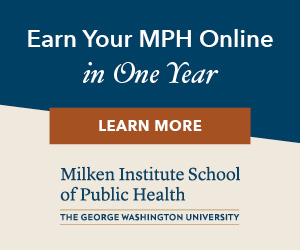Utah increased its ranking to become one of the healthiest states in the country – moving from seventh to fifth place between 2010 and 2014 according to the United Health Foundation. Part of the reason for this is that Utah had the lowest rate of smoking in the country as of 2014, and the second lowest percentage of residents with diabetes as of 2013.
Public health spending at the state level totaled more than $85.5 million in fiscal year 2013-14. Utah also received substantial funding from the federal government. Funding from the Health Resources Service Administration was more than $62.1 million in fiscal year 2014, while the CDC (Centers for Disease Control and Prevention) invested more than $59.7 million in the health of Utah’s residents. This level of spending on public health helps to create jobs in the sector and ensures that salaries are commensurate with the important work the state’s public health professionals perform.
The Utah Department of Health (UDOH) is a major employer of public health professionals in the state. This agency acts to improve public health by providing information on the prevention of chronic and communicable diseases, monitoring diseases and environmental hazards, and providing advice on health policy to the state legislature – among many other programs and initiatives.
Epidemiologists with the UDOH track more than 75 communicable diseases in the state and identified a high rate of pertussis in 2013. They found that the rate of this highly contagious disease was five times higher than what was found nationally.
In addition, environmental health epidemiologists investigate and assess environmental hazards. They consult with governmental and non-governmental stakeholders at the state, federal, and community levels to ensure that environmental health is considered in the development of public policy. These efforts have helped reduce the release of hazardous industrial byproducts five-fold between 2001 and 2014.
The efforts of public health professionals in Utah have had demonstrable effects on the health of the state’s residents. For instance, the rate of smoking decreased 13% between 2012 and 2014, while the rate of preventable hospitalizations decreased 9% in 2014.
A Comparison of Public Health Professional Salaries in Salt Lake City
The Utah Department of Workforce Services provides the median salaries for a number of public health professional classifications found in the Salt Lake City metro area for 2012. Since public health professionals with advanced degrees such as a Master of Public Health are likely to be highly compensated for their level of expertise, they are likely to earn more than the median salary.
Community and Social Services
- Community Health Workers: $44,720
- Health Educators: $58,100
- Healthcare Social Workers: $56,030
- Rehabilitation Counselors: $45,990
- Substance Abuse & Behavioral Disorder Counselors: $46,140
Computers and Mathematics
- Statisticians: $63,030
Engineers
- Health & Safety Engineers: $84,150
Healthcare Practitioners
- Occupational Health & Safety Specialists: $59,180
Life and Social Sciences
- Biological Scientists: $70,800
- Environmental Scientists & Specialists: $63,650
- Microbiologists: $39,370
- Social Science Research Assistants: $45,540
- Social Scientists: $71,100
Public Administration
- Social & Community Service Managers: $65,560
An Analysis of Public Health Professional Salaries Statewide
The salaries for epidemiologists, based on experience, with the Utah Department of Health are shown below (2015):
- Epidemiologist II – $75,400 – $47,528
- Epidemiologist I – $67,642 – $42,640
In the table below, the US Bureau of Labor Statistics provides a full analysis of salaries for a number of other public health professions in Utah for 2014:


